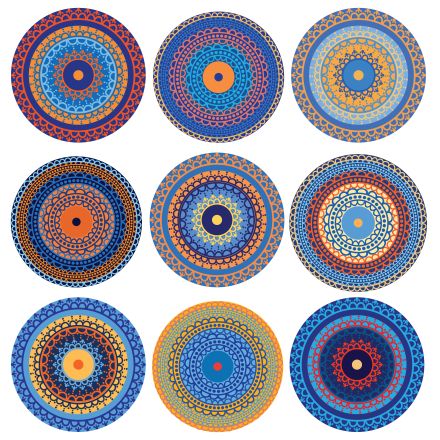The relationship between the circle and the centre
Each circle has a centre which is actually an essential part of the circle. Our eyes search for it and we may be satisfied with a vision, an image that unfolds before us, if we find the circle’s centre. The same goes for our lives. We constantly search for, or are trying to locate in a substantial way, the centre - that middle path - the only point that, if we find it, we can be satisfied because we have reached the goal that we desire. The eye-catching and spirit lifting mandala’s nature helps us to find our centre.

The (centre) point and the extension of it, namely the circle, symbolises perfection, wholeness, or in other words and in almost all cultures, God. This is no accident, since a point is incomprehensible for humans - you cannot touch it or see it, yet it is something that is known to exist, but our senses cannot perceive it. As dust is present in rocks, and vice versa as the dust also constitutes the rock, the point is there in the circle, and this circle is the point. If the point is considered as God, the circle may be the world. The centre cannot exist without the circle, and the point only exists if it is compared to something, like a circle. Whatever exists comes from God, says religion, so the reason that we operate, that we fight or play, is in order to look for God through that activity. Circles run at our workplaces, in our families, in our ‘circle’ of friends, and if we do it all well, we get closer to God, to the centre of our lives.
Live the mandala!
What does that all have to do with the mandala? First of all, a beautiful picture that may be suitable for both reassurance and inspiration. More importantly, however, its content is much more important than its decorative role. While we prepare mandalas, draw and colour them we can discover our hidden characteristics and internal paths. Creating a mandala is about creating something around a centre p